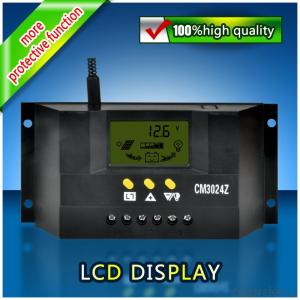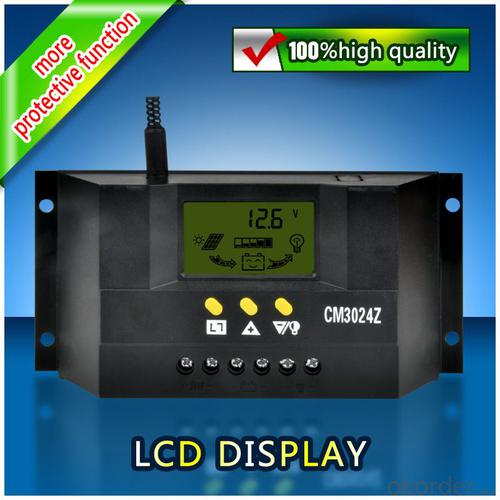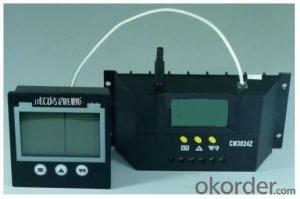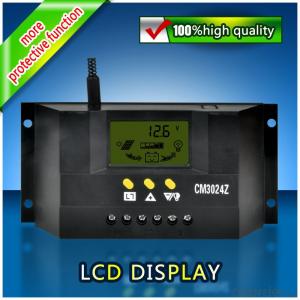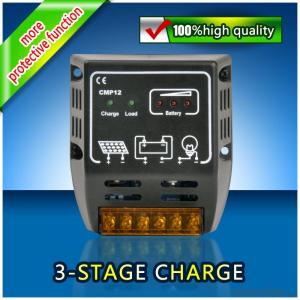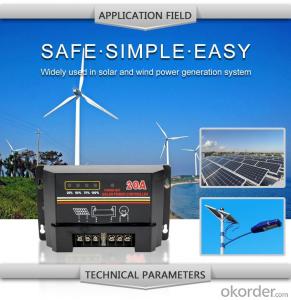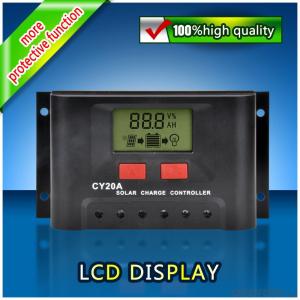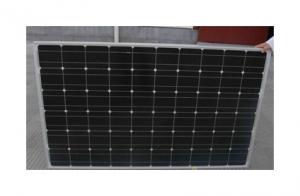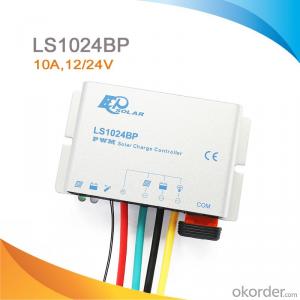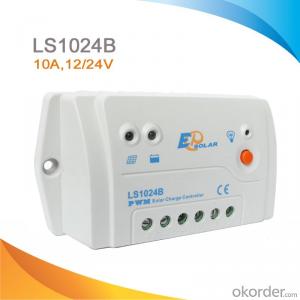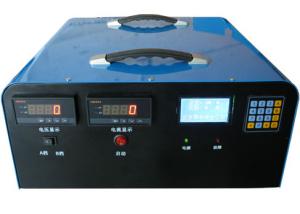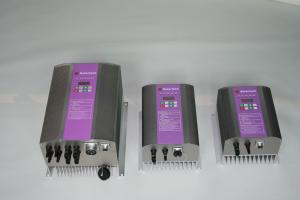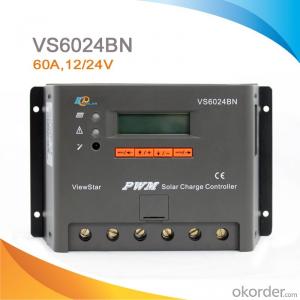Solar LCD Controller CM3024Z with best price
- Loading Port:
- China main port
- Payment Terms:
- TT or LC
- Min Order Qty:
- 1 unit
- Supply Capability:
- 10000 unit/month
OKorder Service Pledge
OKorder Financial Service
You Might Also Like
Product Introduction
Solar controller is control device which can control solar panel and transform solar energy into electricity then store to the battery bank. Solar controller is the most important part in offgrid system, whose performance has much effect on life expectancy and operation of the whole system, especially the battery expectancy.
Application Areas
Standalone Photovoltaic power station
Standalone Domestic household photovoltaic power system
Mobil communication base stations, expressway and other non-residential regions.
Coastal islands, remote mountainous, border posts for regions shortage of or without electricity.
Government demonstration projects, landscape lighting project etc.
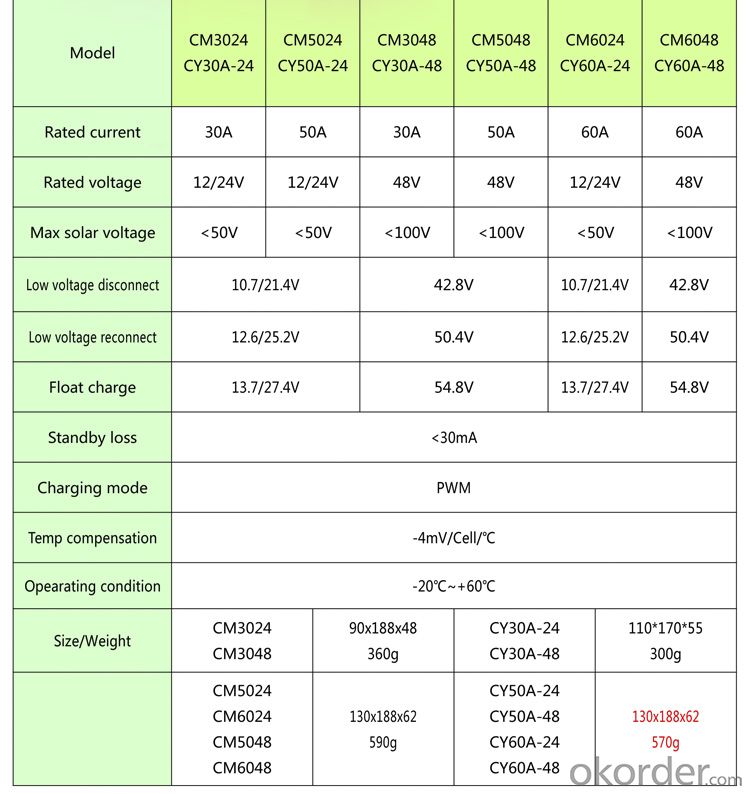
Selection of high-quality materials properties be consistent from beginning to end
For life is a convenient
A little more secure
The innovation design idea of the perfect show
The first set of people-oriented
The high-end configuration components
- Q: What is the meaning of the DC load above the solar controller?
- Because the controller output function, such as the switch, then the battery is DC energy, so if the direct output, can only take the DC load, can work properly, if you want to work on the AC load, then the need to connect the controller output DC Inverter, so that the AC load can work. My space has a lot of information about the solar system, welcome to come to view
- Q: Can a solar controller be used in a solar-powered electric vehicle charging system?
- Yes, a solar controller can be used in a solar-powered electric vehicle charging system. The solar controller helps regulate the voltage and current from the solar panels to ensure optimal charging of the electric vehicle's battery. It also provides protection against overcharging and over-discharging, thus extending the battery's lifespan.
- Q: How does a solar controller handle battery low voltage recovery?
- The battery low voltage recovery is managed by a solar controller, which constantly monitors the voltage level of the battery bank. When the voltage falls below a specific threshold (typically around 11.5 to 11.8 volts for a 12-volt system), the solar controller commences the recovery process. During this recovery phase, the solar controller eases the burden on the battery bank by disconnecting or reducing power to non-essential loads. This action prevents further depletion of the battery and enables it to recharge more efficiently. In parallel, the solar controller activates the solar panels to initiate the charging of the battery bank. It effectively governs the charging procedure by regulating the amount of current transmitted from the panels to the batteries. By doing so, the controller ensures that the charging current remains within safe boundaries, preventing overcharging and potential damage to the batteries. While the battery voltage gradually increases, the solar controller continuously observes the charging process. Once the battery attains a predetermined voltage level (usually between 13.5 to 14.5 volts for a 12-volt system), the controller switches to a float or maintenance charging mode. In this mode, the controller diminishes the charging current to a lower level, maintaining the battery's full charge while preventing overcharging. To summarize, the solar controller manages the battery low voltage recovery by reducing the load on the battery, activating the solar panels for charging, and overseeing the charging process to restore the battery voltage to a safe and optimal level.
- Q: Can a solar controller be used with solar panels that are connected to a solar concentrator?
- Yes, a solar controller can be used with solar panels that are connected to a solar concentrator. A solar concentrator is a device that focuses sunlight onto a smaller area, increasing the intensity of the light and therefore the amount of energy that can be harvested. The solar controller is responsible for regulating the charging and discharging of batteries in a solar power system, and it can be used in conjunction with solar panels connected to a solar concentrator to ensure that the batteries are charged efficiently and safely. The solar controller will monitor the incoming voltage and current from the solar panels and adjust the charging parameters accordingly. Therefore, it is compatible and recommended to use a solar controller with solar panels connected to a solar concentrator to optimize the performance and longevity of the solar power system.
- Q: How does a solar controller prevent overcharging of batteries?
- A solar controller prevents overcharging of batteries by regulating the flow of electricity from the solar panels to the batteries. It continuously monitors the battery voltage and adjusts the charging current accordingly, ensuring that the batteries are charged at the optimal level and preventing any excess energy from damaging the batteries due to overcharging.
- Q: How does a solar controller handle short-circuit conditions?
- A solar controller typically handles short-circuit conditions by detecting the excessive flow of current and immediately shutting off the circuit to prevent damage to the system.
- Q: How does a solar controller handle electromagnetic interference?
- Various techniques and components are employed in the design of a solar controller to address electromagnetic interference (EMI). EMI can arise from nearby electronic devices, power lines, or radio frequency sources, and it has the potential to negatively affect the solar controller's performance and reliability. Shielding is one of the primary methods utilized by a solar controller to mitigate EMI. Typically, the controller is enclosed within a metal or conductive enclosure that acts as a shield, safeguarding the internal circuitry from external electromagnetic waves. This shielding effectively contains the electromagnetic fields generated by nearby sources, preventing them from interfering with the operation of the controller. In addition to shielding, a solar controller incorporates various filtering components to suppress EMI. These components, such as capacitors, inductors, and ferrite beads, are strategically placed within the controller's circuitry to mitigate and absorb unwanted electromagnetic energy. Acting as barriers, they block or redirect high-frequency noise, preventing it from reaching sensitive components. The design and layout of the solar controller's circuit board also play a crucial role in managing EMI. Employing proper grounding techniques and carefully routing signal traces assist in reducing the controller's susceptibility to electromagnetic interference. Ground planes and signal isolation techniques are implemented to minimize the coupling of unwanted electromagnetic energy into the controller's internal circuitry. To ensure adherence to EMI regulations and standards, solar controllers undergo rigorous testing and certification processes. These tests assess the controller's capacity to function correctly and endure in the presence of electromagnetic interference. Compliance with these standards guarantees the solar controller's reliable performance while avoiding the introduction of harmful interference to other electronic devices. In conclusion, a solar controller effectively deals with electromagnetic interference by utilizing shielding, filtering components, appropriate circuit board design, and compliance with EMI regulations. Collectively, these measures minimize the impact of external electromagnetic waves and ensure the dependable operation of the solar controller in diverse environments.
- Q: What is the role of a solar controller in preventing battery thermal runaway?
- The role of a solar controller in preventing battery thermal runaway is crucial. A solar controller, also known as a charge controller, is responsible for regulating the charging and discharging of batteries in a solar power system. It ensures that the batteries are charged at the optimal level and protects them from overcharging or discharging, which can lead to thermal runaway. Thermal runaway occurs when a battery becomes overheated, resulting in a rapid increase in temperature and potentially causing an explosion or fire. This can be caused by factors such as overcharging, excessive discharge rates, or high ambient temperatures. To prevent battery thermal runaway, a solar controller employs various mechanisms. One of the primary functions is to monitor the battery voltage and temperature. By continuously measuring these parameters, the controller can adjust the charging or discharging current to maintain the battery within safe limits. For example, if the temperature rises beyond a certain threshold, the controller can reduce the charging rate or turn off the charging altogether until the temperature returns to a safe range. Furthermore, a solar controller also incorporates safety features like temperature sensors and thermal shutdown mechanisms. These sensors detect abnormal temperature increases and trigger the shutdown of the charging process to prevent further heating. The controller may also have an alarm system or communication capabilities to alert the user or system operator about any potential issues. Additionally, some advanced solar controllers utilize advanced algorithms and intelligent charging profiles to optimize the charging process and minimize the risk of thermal runaway. These algorithms take into account factors such as the battery chemistry, capacity, and ambient conditions to deliver the most efficient and safe charging strategy. In summary, the role of a solar controller in preventing battery thermal runaway is to regulate the charging and discharging process, monitor battery voltage and temperature, implement safety features, and employ intelligent algorithms to maintain the battery within safe operating conditions. By doing so, it helps ensure the longevity and safety of the battery in a solar power system.
- Q: Can a solar controller be used with solar-powered data centers?
- Yes, a solar controller can be used with solar-powered data centers. A solar controller is a crucial component of a solar power system that regulates the flow of electricity generated by solar panels. It ensures that the solar power system operates efficiently and effectively by managing the charging and discharging of batteries. In a solar-powered data center, a solar controller helps optimize the utilization of solar energy, enabling the data center to rely on renewable energy sources and reduce its carbon footprint.
- Q: How does a solar controller regulate the charging of batteries?
- A solar controller regulates the charging of batteries by monitoring the voltage and current levels generated by the solar panels and adjusting the charging process accordingly. It ensures that the batteries are not overcharged, which can lead to damage, and prevents undercharging, which can affect their performance. The solar controller controls the flow of power from the solar panels to the batteries, optimizing the charging process based on the battery's state of charge and the available solar energy.
Send your message to us
Solar LCD Controller CM3024Z with best price
- Loading Port:
- China main port
- Payment Terms:
- TT or LC
- Min Order Qty:
- 1 unit
- Supply Capability:
- 10000 unit/month
OKorder Service Pledge
OKorder Financial Service
Similar products
Hot products
Hot Searches
Related keywords
